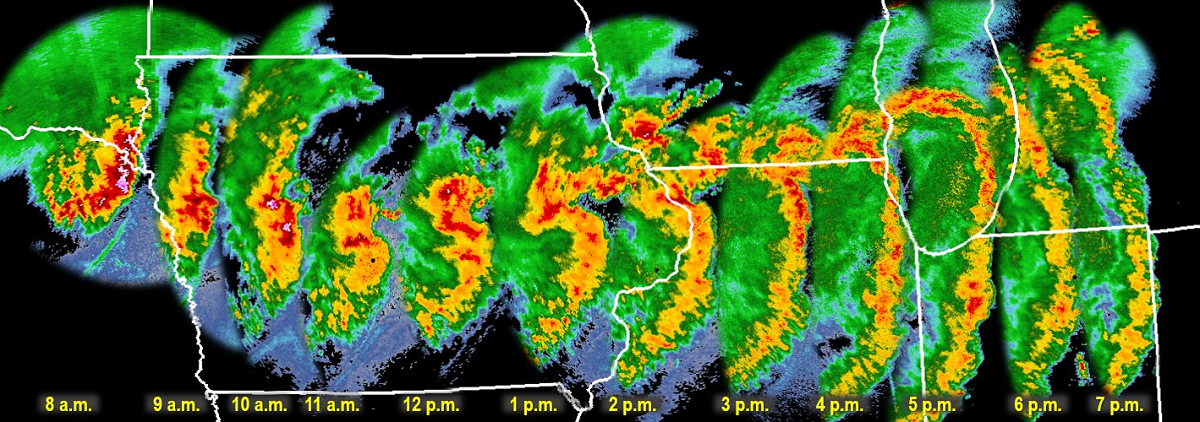
A week has passed, but the devastation remains as people continue to pick up the pieces from a devastating, destructive derecho that blew through the Midwest last Monday. Iowa was among the states hit hardest, with more than 1.3 million people losing power in the derecho; according to PowerOutage.US, 70,000 people remain in the dark there.
A derecho (pronounced as deh-REY-cho) is a widespread, long-lived windstorm. Derechos are associated with bands of rapidly moving showers or thunderstorms; some are known as bow echos, squall lines, or quasi-linear convective systems. “Derecho” is a Spanish word meaning “direct” or “straight ahead.” In contrast, the word “tornado” is thought by some to have been derived from the Spanish word “tornar,” which means “to turn.” Because “derecho” is of Spanish origin, the plural form is spelled “derechos.
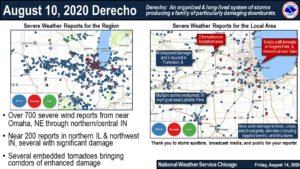
The word “derecho” was coined in 1888 by Dr. Gustavus Hinrichs, a professor of physics at the University of Iowa. Hinrichs used the term in a paper published by the American Meteorological Journal to distinguish thunderstorm-induced straight-line winds from the damaging, rotary winds of tornadoes. “Derecho” was adopted to a limited extent by the meteorological community during the 1880s. However, the word disappeared from use for nearly a century until it was resurrected by the National Oceanic and Atmospheric Administration’s (NOAA) National Severe Storms Forecast Center which eventually became known as NOAA’s Storm Prediction Center (SPC.)
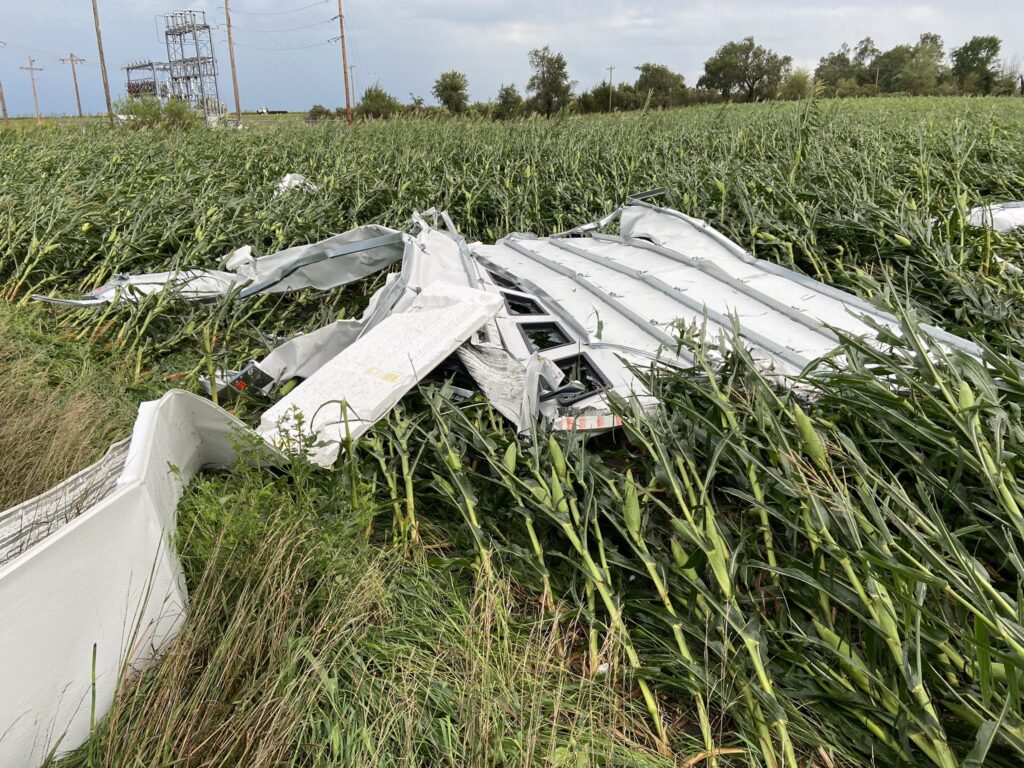
The winds associated with derechos are not constant and may vary considerably along the derecho path, sometimes being below severe limits (57 mph or less), and sometimes being very strong (at or above hurricane force winds of 75mph.) Swaths of stronger winds within the general path of a derecho are produced by what are called downbursts, which often occur in irregularly-arranged clusters, along with embedded microbursts. Derechos might be said to be made up of families of downburst clusters that extend continuously or nearly continuously for at least 250 miles.
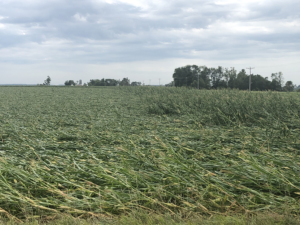
In the case of last Monday’s derecho, the well-organized and long-lived complex of storms produced widespread severe wind damage across Iowa, northern Illinois, and northern Indiana during the day on Monday, August 10. Much of this severe wind was significant at speeds greater than 75 mph, resulting in many downed trees, several toppled-over semi trucks, and many communities receiving at least some minor structural damage. Within the broader area of severe winds, 15 tornadoes were confirmed across northern Illinois and northwest Indiana.
Beyond severe straight-line winds, several tornadic circulations developed within the main line of thunderstorms, and these accounted for 13 tornadoes across northern Illinois and northwest Indiana. In addition, a lone supercell that was subsequently absorbed into the main line produced two tornadoes in and around the Rockford area, bringing the total number of tornadoes for this event to 15.

In the Chicago area, this derecho became tied for the second highest number of tornadoes to occur on a single calendar day in their forecast area and was the most to occur on a single calendar day in the month of August.
In Iowa, the derecho brought a near-death blow to the agriculture industry, destroyed silos filled with grain and flattening millions of acres of crops. Last night, Iowa Governor Kim Reynolds announced she’s filing an expedited Presidential Major Disaster Declaration with the federal government. “From cities to farms, Iowans are hurting, many still have challenges with shelter, food, and power,” Reynolds said in a statement. “Resilience is in our DNA, but we’re going to need a strong and timely federal response to support recovery efforts.” An estimated 40% of corn and soybean crops in Iowa was lost; the storm damaged or destroyed more than 14 million acres of corn alone. In Reynolds’ disaster declaration, she’s seeking nearly $4 billion to rebuild and repair the disaster created by the derecho.
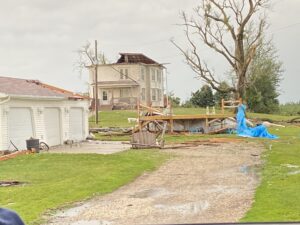
Beyond livestock and people eating kernels of corn for food, corn is an important staple in most of the American diet. Foods like ketchup, salad dressing, soda, cookies and chips all contain corn, usually in the form of high fructose corn syrup. Corn is also an important fuel source. In 2018, according to the U.S. Department of Energy, out of the 14.62 billions of bushels of corn produced, 5.60 billions of bushels were used to produce corn ethanol. Currently, corn ethanol is mainly used in blends with gasoline to create mixtures such as E10, E15, and E85. Ethanol is mixed into more than 98% of United States gasoline to reduce air pollution. With crops devastated and the ability to store what could be harvested decimated, shortages of food for people and animals as well as fuel for the transportation industry are likely. The United States is the world leader in corn production; no state grows more corn than Iowa, producing roughly a fifth of the nation’s supply.
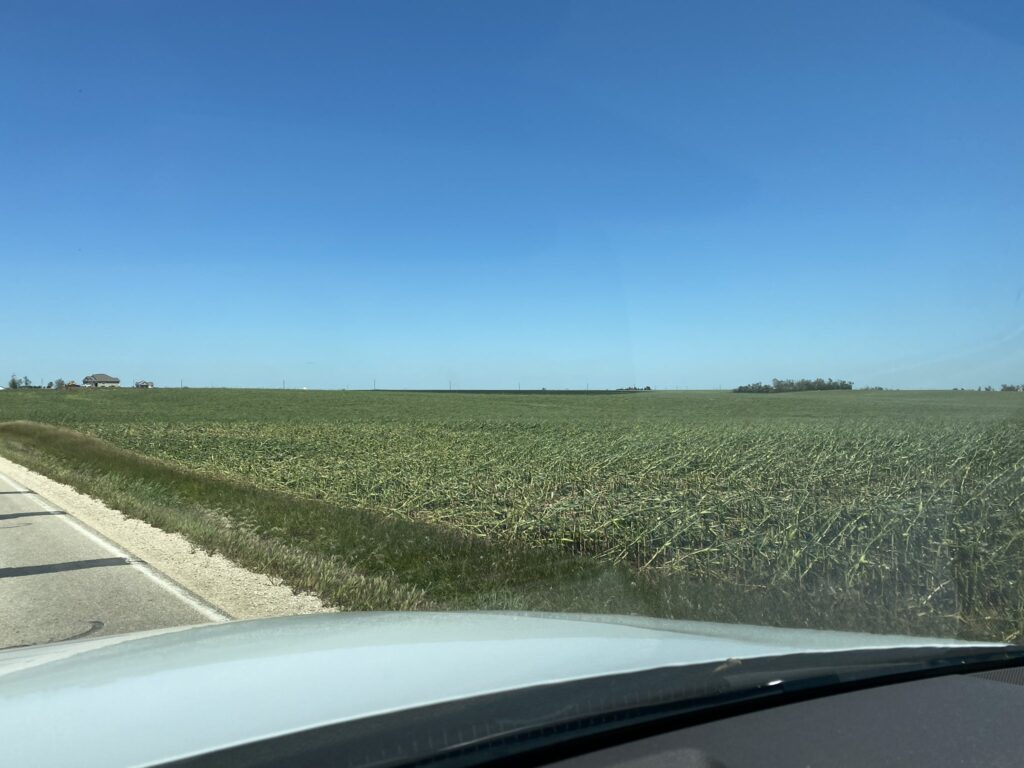
President Donald Trump said today that he has approved Iowa’s application for a major federal disaster declaration in the aftermath of last week’s derecho. “I just approved an emergency declaration for Iowa, who had an incredible wind storm like probably they’ve never seen before. It really did a lot of damage,” Trump told reporters Monday morning, according to a White House transcript of his remarks. A White House official confirmed to the Des Moines Register that the President will visit Cedar Rapids tomorrow.